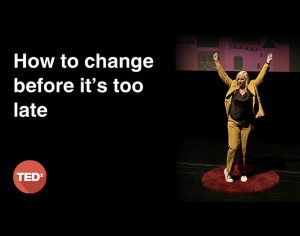When I first joined Artfinder as CEO in 2012, it was a bit of a mess. We were making the classic mistake of doing too much but not really excelling at any one thing. There were thousands of images of art on our site, all of which took time to upload and manage. On top of that, we’d created a complex web of partnerships with galleries that weren’t generating revenue. We were also selling too many products like posters that had a very low profit margin: you have to sell an awful of posters to make any money. If that weren’t enough, we were developing new technology like museum apps that were very interesting and great for creating brand awareness but again this wasn’t generating any revenue.
This approach probably stemmed from the fact that we were trying to target everyone with an interest in art – an impossibly broad definition. Art lovers can be anyone from serious collectors to people who occasionally pick up a postcard from the gift shop of a museum when they’re on holiday. And having such an ill-defined audience doesn’t really help you focus on what’s most important and generate revenue, which is what we needed to be doing.
Unfortunately, our investors weren’t willing to put anything more into the business because they hadn’t seen the results they’d hoped for. At one point we had just two months’ worth of cash in the bank with no new investment lined up; we came perilously close to calling it a day. Clearly we needed to do things differently. So many times people talk about pivoting but then nothing really changes. I could see that to survive we needed to make a full pivot, even if the changes were painful.
One of the first big moves I made was to strip away many of the partnerships. This proved to be challenging because everyone was responsible for taking care of certain partners and nobody wanted to see their’s go. But that wasn’t enough: I also had to lay off some very brilliant people – many of whom had come to be my friends. Buoyed by an overly optimistic outlook, the company had hired too many people we couldn’t afford anymore. I had to let most of the team go, leaving only one person from each department.
Of course there was some resistance to these moves, which is perfectly understandable: people had made an emotional investment in the business and had spent time building up partnerships and projects. Even if you logically know something needs to be done, we’re all human and have a tendency to fall in love with what we’ve built so it’s hard to let go. But there was no alternative: the business was running out of money.
At this point, I had to identify what we were going to do next. I could see there was desire from people to discover new artists and a need for struggling artists to connect with potential buyers. And we were already offering a service that brought artists and buyers together that was getting some traction but it was buried under all the other things we were doing. So the final part of our pivot was to focus on becoming the best marketplace for art out there.
Today, our rebrand as an art marketplace is complete, we’ve grown our team and we’ve also raised $2.2m in funding. In retrospect, I can see that I should have cut back on our expenses much sooner so we never came so close to running out of cash. I shouldn’t have trusted that money would continue to come in and perhaps could have operated more defensively. But if you want to do something revolutionary you have to accommodate some degree of failure. That’s the nature of startup life: you try, you fail and you learn. ![]()
Share via:


















































